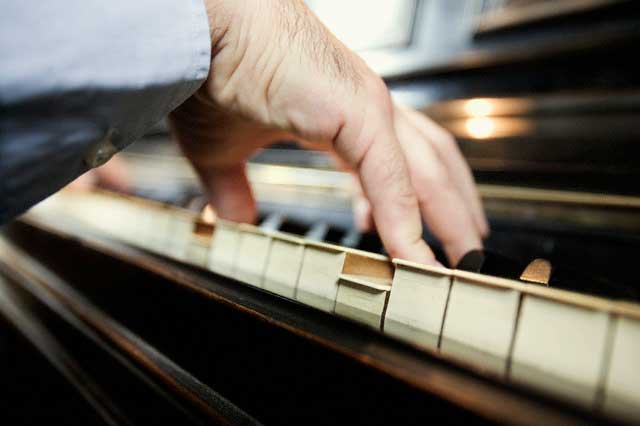It’s Never Too Late … Learn A Musical Instrument

Music tames the savage soul, or so they say. If you’ve never taken up a musical instrument before, now might be the time. Learning a musical instrument can be invigorating and rewarding. Professional as well as amateur musicians among us know that once you’ve learned how to play one instrument, learning others becomes easier.
Learning how to read music? Harmony and Theory: A Comprehensive Source for All Musicians by Keith Wyatt, discusses the fundamentals of how to decipher musical notation and provides solid footing for students on many different levels. If you’re more disposed to software, visit Gigajam, at gigajam.com which offers a curriculum for students to play an instrument proficiently.
Guitar Lessons, at www.guitarlessons.com, offers free video guitar lessons that you can follow online. Catering to beginning, intermediate, and advanced musicians, Guitar Lessons offers topics on both electric and acoustic guitar covering topics such as guitar skills, guitar chords, blues guitar, and lead guitar.
Another resource, Justin Guitar, at www.justinguitar.com, offers instruction on basic theory of music, musical scales, rhythm, and progressions. If you stick with it, eventually you can aspire to mastery.
The Basics
Regardless of what learning aids you have in mind here are basic steps for learning a musical instrument:
* Find a place where you can study or practice. This could be in your house, on the back porch, at the park, or in sound-proof room in a library or school. Without a place to study and practice regularly, you’re not likely to go far.
* If you don’t know how to read music, that is job #1. The notes are the same for all instruments. Once mastering the basics of reading music, you’re on your way.
* Learn all you can about music theory and about your desired instrument. Familiarity with the topic and your instrument of choice will help keep you on course when you might otherwise stray.
* Warm up before you begin to practice. This could involve stretching; finger, hand, arm, and shoulder exercises; and in the case of woodwinds, mouth exercises. Warm-ups for any type of instrument are readily available on the internet, including diagrams.
* Practice and practice some more. Repetition is the key to effective technique when learning an instrument, so you might as well accept it at the outset.
* Play the scales, then play them again and again. Part of any good practice session, and certainly during the beginning stages of your quest, is to play the scales. This helps you to warm up, become mentally and emotionally ready, and sharpen your focus.
* Once you start playing musical pieces, play them with passion. No matter how simplistic a tune might be, “get into the music,” and play it with verve.
* Notice the beat at which you play the best. Then, practice several times, “playing in time.” You might be surprised at how quickly you become proficient.
* Sharpen your listening skills. Train your ear by listening to others when you’re watching TV, a live performance, or simply listening to music. The pros make it seem so easy, but they devoted years of practice to become masters. Listen to the best to benefit like the rest.
* Constantly hone and refine your technique. If you’re playing piano, watch your posture, the bench height, your distance from the keys, and hand-placement. Good techniques become good habits, bad techniques become bad habits.
Eventually, you’ll be able to play without sheet music and perhaps impress others. Most importantly, you’ll experience a deep sense of satisfaction.
Jeff Davidson, “The Work-Life Balance Expert®,” is a professional speaker and thought leader on work-life balance issues. He is the author of “Breathing Space” and “Simpler Living.” For more information, go to www.breathingspace.com.